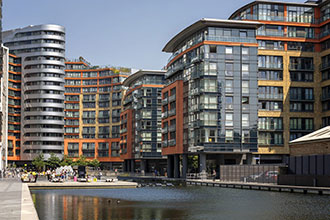5 steps to mastering mixed-use property management

Mixed-use developments have been around for centuries – an early example is Trajan’s Market in Rome, which dates back to around 110 AD. It’s considered by many to be the world’s oldest shopping mall, and also included apartments and government offices. Today, after a pandemic-induced downturn, mixed-use developments are making a strong comeback.
Mixed use developments can bring new life to otherwise unused space, they use land efficiently, and promote a sense of community. Residents enjoy the convenience they offer, and business owners enjoy the density of people who live and work in these spaces.
Property managers, however, are faced with the extraordinary challenge of managing what is essentially a community of residents, tenants that may include shops and restaurants, office space, and maybe even a hotel. Each of these elements alone calls for a unique skill set. Combined, the confluence of property uses can clash without proper guidance and management.
Successful mixed-use property management comes down to five steps.
- Build a great team. The success of your property depends on the knowledge and experience your team members bring to the table, including:
- Knowledge of tenant-landlord laws
- Organizational skills
- Client service experience, which is crucial
- Finance and budgeting for mixed-use
- Always take time to find the best people to support you and be there for tenants and residents - people with the right qualifications and backgrounds for the job. To help you get started, IREM® offers a team-building course you can take at any time.
- Communicate. Do not underestimate the importance of communication among all key stakeholders – residents, tenants, owners, vendors and staff. Effective and frequent communication builds trust, enhances community, and sustains the development. Open communication makes everyone feel more comfortable, as they are kept up-to-date on issues that concern them every day. This is especially important in mixed-use properties with so many unique stakeholders.
- Use technology to your best advantage. Today, property managers must navigate the myriad technical products designed to improve operational efficiencies. Beyond that, mixed-use property managers are responsible for drafting lease agreements, tenant screening, building maintenance and repairs, finance and budgeting, landscaping, parking, garbage removal and a lot more. As all these disciplines are more complex in mixed-use properties, it’s important to avail yourself of technologies that help manage the scope of these responsibilities quicker, easier, and more efficiently. Explore them.
- Strengthen your network. You’re not alone. And you’re going to need to rely on the experiences of other property managers from time to time when you find yourself in a new situation with few resources to help. Organizations like IREM are known for their vast networks of professionals and provide members with access to a global community of property managers who face the same challenges you do. Many of them are highly skilled mixed-use property managers, and they’re there to help.
- Enhance your people skills. Property management is a relationship-driven business. In mixed-use developments, you’ll need to work with a broad range of people with different needs and objectives. If relationship-building doesn’t come naturally to you, learn to relate to people, respect and understand them, respond to their problems, and build relationships based on trust. There will be conflicts – learn to resolve them gracefully. To improve these skills, consider taking an on-demand course focused on developing successful professional relationships and managing conflict.
Take IREM’s new mixed-use course to help master these five steps. With the right skills and patience, you can confidently move ahead with any mixed-use property management role.